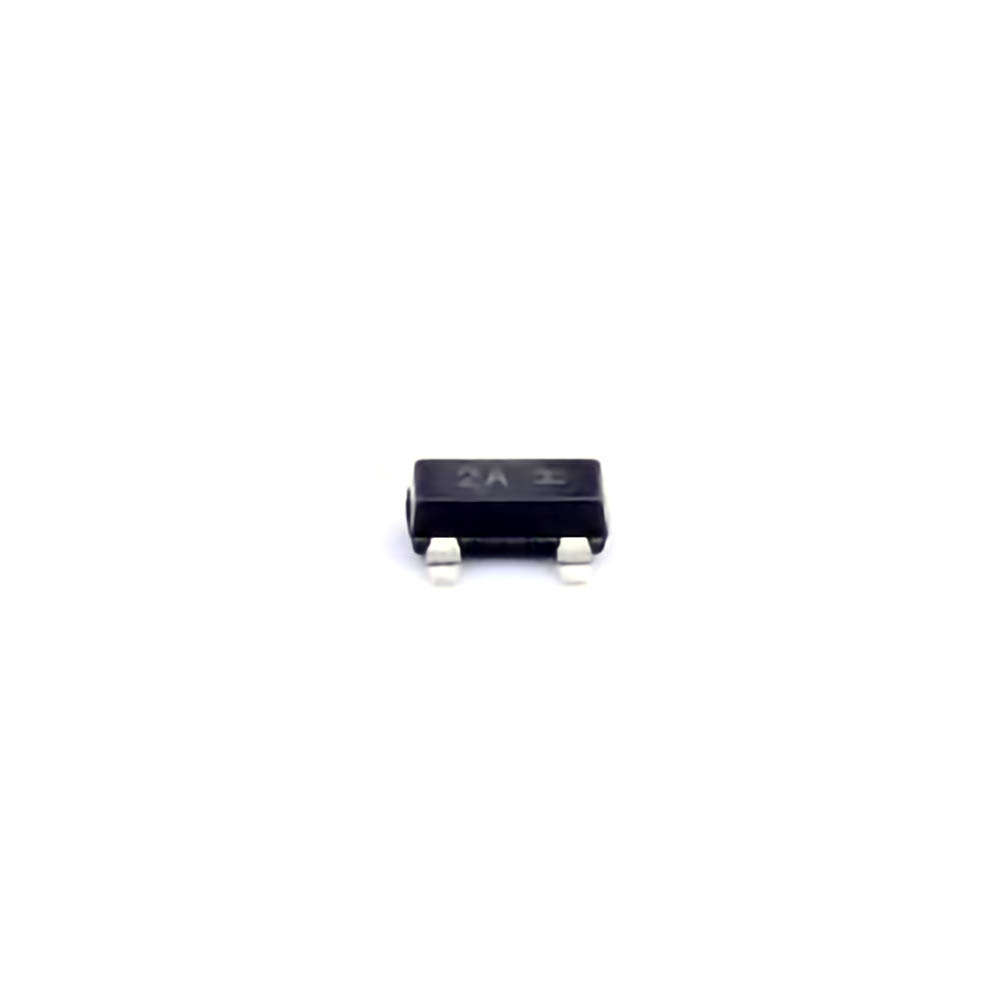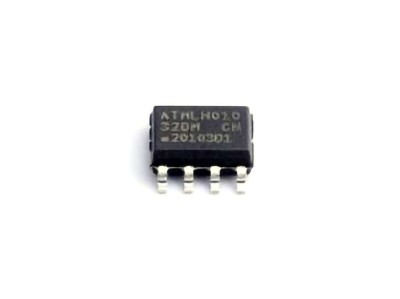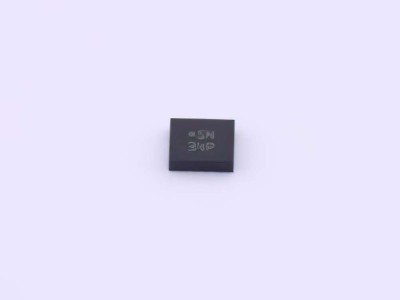
In this article, we explore the various applications of the MMBT3906LT1G transistor in amplifier and switching circuits. By examining the unique characteristics and benefits of this small-signal PNP transistor, we showcase how it plays a vital role in modern electronic designs. From Audio Amplifiers to switching Power supplies, the MMBT3906LT1G delivers high pe RF ormance in a range of circuits.
MMBT3906LT1G, PNP transistor, amplifier circuits, switching circuits, electronic components, signal amplification, transistor applications, small-signal transistors, circuit design, electronics
Understanding the MMBT3906LT1G and Its Role in Amplifier Circuits
The MMBT3906LT1G is a popular small-signal PNP transistor widely used in a variety of applications, particularly in amplifier and switching circuits. Manufactured by ON Semiconductor, this transistor is known for its high gain, compact size, and reliability, making it an essential component in numerous consumer electronics, audio equipment, and communication systems. In this section, we will explore how the MMBT3906LT1G fits into amplifier circuits and why it is an ideal choice for signal amplification.
What is the MMBT3906LT1G?
The MMBT3906LT1G is a general-purpose PNP transistor designed for low to medium-power applications. With a maximum collector current rating of 200mA and a voltage rating of 40V, it is capable of efficiently amplifying small AC signals in audio and RF circuits. Its small package size, typically available in a surface-mount SOT-23 configuration, allows for space-efficient designs while maintaining high performance.
Amplifier Circuit Basics
Amplifiers are used to increase the amplitude of signals, typically in audio systems, communication devices, or instrumentation. In a typical amplifier circuit, a transistor like the MMBT3906LT1G is used to amplify weak input signals into stronger output signals. The transistor achieves this by taking a small input current and providing a larger output current at the collector, which corresponds to a higher voltage gain in the circuit.
In amplifier circuits, the role of the PNP transistor is to act as a current-controlled device. When a small input current is applied to the base, it modulates the current flowing from the emitter to the collector, thus amplifying the input signal.
Application in Audio Amplifiers
One of the most common applications of the MMBT3906LT1G is in audio amplifiers, where it helps drive speakers or other output devices. In audio amplification, the transistor is typically used in the first stage of an amplifier circuit, where it provides high input impedance and low output impedance. This enables it to efficiently handle small audio signals while minimizing distortion.
A typical audio amplifier using the MMBT3906LT1G might include a voltage divider at the input to set the biasing conditions, a coupling capacitor to filter the AC signal, and a load resistor at the output to convert the current into a usable voltage. The transistor amplifies the audio signal, providing the necessary current to drive speakers or headphones.
The MMBT3906LT1G’s low noise characteristics and high gain make it especially useful in high-fidelity (Hi-Fi) audio systems. Its ability to operate with minimal distortion and provide stable amplification of weak audio signals contributes to clearer sound reproduction.
High-Frequency Amplification
The MMBT3906LT1G is also used in high-frequency applications, such as RF amplifiers in communication devices. Its high transition frequency (fT), which can exceed 250 MHz, makes it suitable for amplifying RF signals with minimal loss. The transistor can amplify both low and high-frequency signals, making it versatile for a wide range of applications, including wireless communication and signal processing.
In RF circuits, the MMBT3906LT1G helps ensure signal integrity by amplifying weak signals without introducing significant distortion. Whether it’s for boosting radio signals or processing modulated data, this small-signal transistor plays an essential role in maintaining communication quality.
Active Component in Tone Control Circuits
Another important application of the MMBT3906LT1G is in tone control circuits for audio devices. Tone control circuits adjust the balance of bass, midrange, and treble frequencies to tailor the sound to the user's preference. The transistor’s ability to provide linear amplification with high gain is beneficial for shaping these frequencies.
In a typical tone control circuit, the transistor may be part of an active filter design. By varying the biasing conditions and feedback resistors, designers can create a circuit that boosts or attenuates specific frequency ranges. The MMBT3906LT1G, with its low distortion characteristics, ensures that the tone control circuits perform with high accuracy, enhancing the audio experience for users.
Practical Example of an Audio Amplifier Design
To illustrate the application of the MMBT3906LT1G in amplifier circuits, consider a basic audio amplifier design:
Input Stage: The audio input signal is coupled through a capacitor to the base of the MMBT3906LT1G. A biasing network consisting of resistors sets the operating point of the transistor to ensure it is in the active region of operation.
Amplification Stage: The transistor amplifies the small input signal, with the current flowing from the emitter to the collector controlled by the base current. A load resistor at the collector helps convert the amplified current into a voltage output.
Output Stage: The amplified signal is then passed through a coupling capacitor to the next stage, whether that be a power amplifier or a speaker driver. The output impedance of the MMBT3906LT1G is low, allowing it to drive subsequent stages with minimal signal loss.
This basic amplifier design showcases how the MMBT3906LT1G can be used to amplify audio signals efficiently while maintaining signal integrity and minimizing noise.
MMBT3906LT1G in Switching Circuits
While the MMBT3906LT1G is often used in amplifier circuits, it also excels in switching applications. Switching circuits are essential in digital logic, power management, and signal processing, where transistors act as switches to control the flow of current. In this section, we will explore how the MMBT3906LT1G is utilized in switching circuits and its advantages in various applications.
Switching Transistor Basics
In a switching circuit, a transistor like the MMBT3906LT1G is used to turn on or off a current flow through a load. The transistor operates in two primary states: saturation and cutoff.
In saturation, the transistor is fully on, and current flows freely from the emitter to the collector.
In cutoff, the transistor is fully off, and no current flows through it.
The ability to quickly transition between these two states makes the MMBT3906LT1G an ideal choice for use in digital switches, pulse circuits, and logic gates.
Application in Digital Logic Circuits
The MMBT3906LT1G is frequently used in logic circuits, where fast switching is required. In logic gates, the transistor serves as a switch that can be turned on or off depending on the input signal. When used in conjunction with other components such as resistors and capacitors, the transistor helps implement Boolean functions such as AND, OR, and NOT gates.
For example, in a NOT gate, the MMBT3906LT1G is used to invert the input signal. When the input is high, the transistor is in cutoff and the output is low. When the input is low, the transistor switches on, and the output becomes high.
The fast switching speed and low input capacitance of the MMBT3906LT1G make it particularly useful in high-speed digital circuits. These characteristics ensure that the transistor can operate effectively in applications where timing and responsiveness are critical.
Power Switching and Regulation
In addition to its role in digital logic, the MMBT3906LT1G is also used in power switching applications. Power supplies, for example, often use transistors like the MMBT3906LT1G to regulate the flow of power to various components in a system. The transistor can act as a switch that turns on or off depending on the input voltage or current, ensuring that power is supplied only when needed.
In power regulation circuits, the MMBT3906LT1G is typically used in conjunction with other components like diodes, inductors, and capacitors to create efficient switching power supplies (SMPS). The transistor’s high switching speed allows it to operate in fast-paced environments where efficient energy conversion is essential.
Example of a Switching Circuit Design
To understand the role of the MMBT3906LT1G in switching circuits, consider a simple example of a pulse generator circuit:
Oscillator: The pulse generator uses the MMBT3906LT1G to switch on and off rapidly, generating a square wave. This square wave can then be used to drive other circuits or to modulate signals in communication systems.
Driver Circuit: The output from the pulse generator can be used to drive a larger switching transistor or a relay, providing the necessary control signal for other components in the system.
Feedback and Control: In more complex circuits, feedback mechanisms may be employed to control the switching behavior of the transistor. For instance, the pulse width modulation (PWM) technique could be used to control the average voltage supplied to a load.
This example demonstrates how the MMBT3906LT1G can serve as an efficient switch in a variety of electronic applications, from simple signal processing to complex power regulation tasks.
Conclusion
The MMBT3906LT1G is a versatile and reliable transistor that finds widespread use in both amplifier and switching circuits. Its high gain, low noise, and small size make it an ideal choice for signal amplification in audio and RF circuits, while its fast switching speed and efficiency are crucial for applications in digital logic, power regulation, and signal processing. By understanding the practical applications of this transistor, engineers and designers can leverage its capabilities to create high-performance and space-efficient electronic systems.
If you are looking for more information on commonly used Electronic Components Models or about Electronic Components Product Catalog datasheets, compile all purchasing and CAD information into one place.


